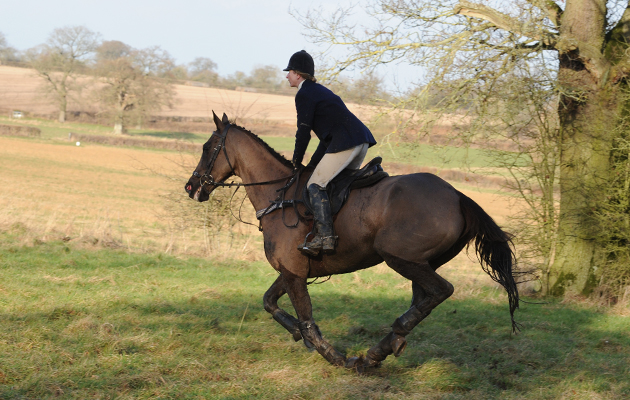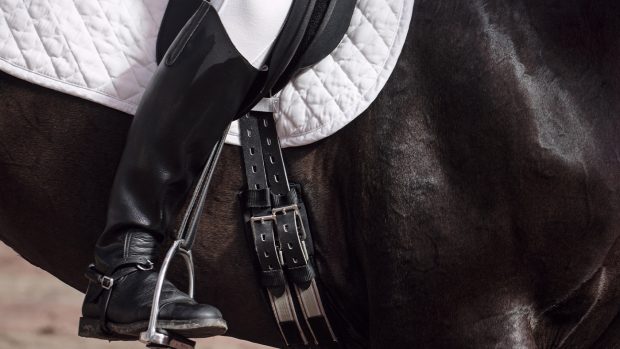A piece of tack that's most often seen on competition horses, Stephanie Bateman finds out what the lever or combination noseband is designed to do, and which horses are best suited to it
How does a lever/combination noseband work?
The lever or combination noseband has a half-moon piece of metal that goes on each side of the horse’s face. A piece of leather attaches to the top end of the metal curve (near the horse’s cheek bone), which runs under the jaw and attaches to the other side of the face. In the middle of the metal curve, a piece of leather runs over the top of the nose, acting as the main noseband, but it sits slightly lower than a standard cavesson — somewhere between a cavesson and a drop noseband. A third piece of leather runs from the bottom of the metal curve under the chin groove of the horse.
This noseband is similar in design to the grackle, and works by preventing the horse from crossing his jaw, which gives the rider more control. The slightly lower position of the noseband, when compared to a cavesson, acts in a similar way to a drop noseband, placing pressure on the nose and chin groove, but without restricting the horse’s breathing.
Continued below…
What type of horse are they suitable for?

The lever/combination noseband is ideal for sensitive-mouthed horses who are very strong, but wouldn’t go well in a stronger bit. It is also good for horses who tend to lean or pull down and forwards.
Team chaser Charlotte Alexander is an advocate of this type of noseband, and as well as using it on her ex-National Hunt racehorse and open team chaser Earthmover, she also now uses it on National Hunt legend Denman (above) when hunting and team chasing.
“I found it very effective with Earthmover, who was exceptionally strong,” explains Charlotte.
“Thoroughbreds tend to have quite soft, sensitive mouths and can be easily over-bitted. I like using grackle nosebands, but however tight it’s done up, the horse can still open their mouths and stretch the leather, making it less effective. The combination noseband can’t be stretched wider so the horse can’t cock their jaw. I find that, once they’ve realised they can’t cock their jaw, they don’t fight as much,” she says.
“The advantage of using this noseband with Denman is that it allows me to have a relatively mild bit in his mouth — a Neue Schule Turtle Top — but still have control when he gets strong and excited in company.
“I’ve been using this noseband for many years, but as with anything, not every horse will go in them – some love it and some hate it.”



